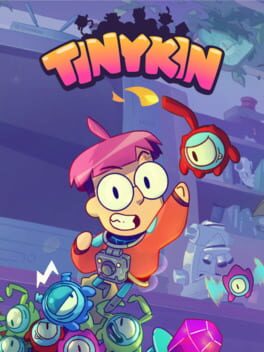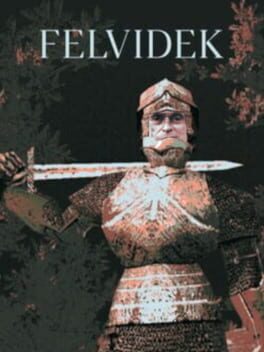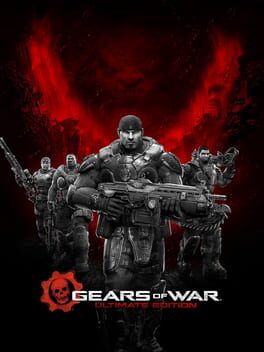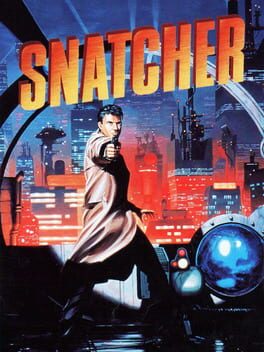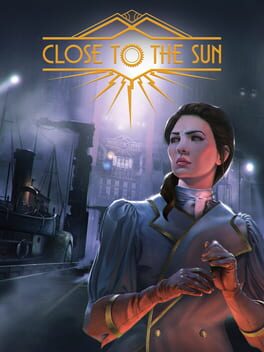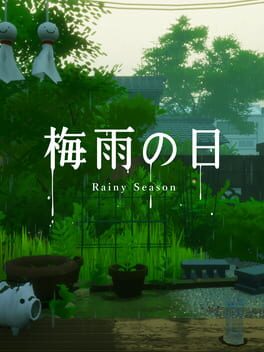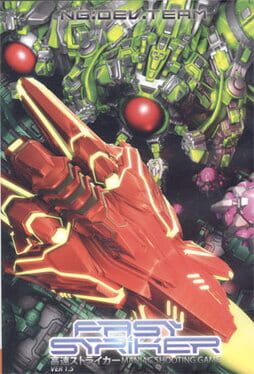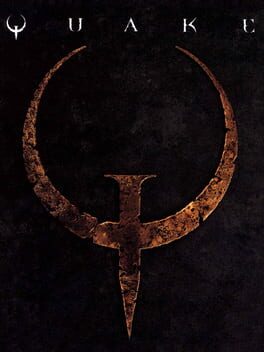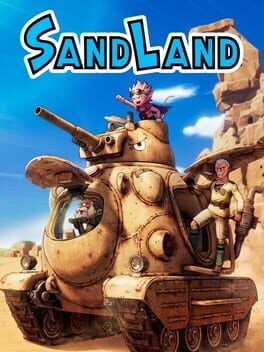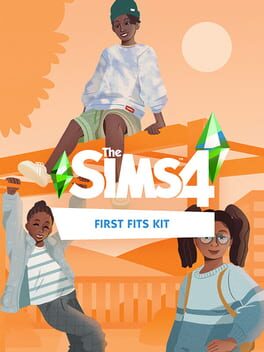Drax
BACKER
20058 Reviews liked by Drax
Tinykin
2022
I held off on playing Tinykin for an unduly long time because I think the protagonist has a stupid haircut. As it turns out, even the in-game NPCs tend to express similar sentiments. Amusing.
The enviro art looks great, and calls to mind many hours spent traversing the world of Chibi-Robo. While Tinykin is clearly Pikmin inspired, it lacks any of the task-management of the series, and instead plays as a very conventional collectathon. Just rummage over every inch of level geo and pick up all the glowing edible looking collectibles on autopilot and the game will complete itself. Tinykin coasts by on delightful style and amusing NPC dialog to create a pleasantly memorable experience.
I gave up on trying to 100% my save, and am dearly wishing for a pollen radar. This is why I really don't like collectathons, they tend to resort to tedium rather than challenge. At least the time trials actually put your management of soap-board and bubble-hover schmoovement to the test. Showing that Tinykin can provide satisfying platforming sequences.
The enviro art looks great, and calls to mind many hours spent traversing the world of Chibi-Robo. While Tinykin is clearly Pikmin inspired, it lacks any of the task-management of the series, and instead plays as a very conventional collectathon. Just rummage over every inch of level geo and pick up all the glowing edible looking collectibles on autopilot and the game will complete itself. Tinykin coasts by on delightful style and amusing NPC dialog to create a pleasantly memorable experience.
I gave up on trying to 100% my save, and am dearly wishing for a pollen radar. This is why I really don't like collectathons, they tend to resort to tedium rather than challenge. At least the time trials actually put your management of soap-board and bubble-hover schmoovement to the test. Showing that Tinykin can provide satisfying platforming sequences.
Felvidek
2024
fantastic lil rpg filled with scrutinizing detail and whimsy. felvidek is something special, not because it's innovating or groundbreaking (it's neither of those), but because it's just so precise in its execution. you meander around the countryside, uncovering a conspiracy and fighting hussites, cultists, and monstrosities. every horror is paired by absurdity, making the encroaching apocalypse feel like one sick joke. it's a struggle to get by as two dudes with limited funds and equipment, but eventually, you become terrifying. instead of getting bodied by cloaked madmen and brigands, you start leaving limp ragdolls on the way to the tavern. even when you get the fourth party member, they're basically a meat shield since they arent a renowned knight or priest. the old english dialog, amazing outfits, and cultural taboos of the time are all so well-realized that you're further enveloped into the game's world. listen to two priests debate celibacy and sobriety, watch how coffee influences the balkans, and witness medieval confusion after stumbling upon two gay dudes. for about five hours, you'll be wanting more and more, but you can't really get anything else out of it. pavol's story ended where it needed. the burg is saved and the fires of hell are put out.
honestly would be a "perfect" game for me if there was only one gun in the entire game. that shit's too op!!! I mean, it's a gun, so it makes sense lol but having two in one party is such a freebie.
honestly would be a "perfect" game for me if there was only one gun in the entire game. that shit's too op!!! I mean, it's a gun, so it makes sense lol but having two in one party is such a freebie.
Decided to finally replay this game again after a handful of years
Even if there should've been more variety in the dungeon design and enemy encounters, if you ask me I still think the gameplay here is a notch more engaging than most other turn-based games. You do have to try and conserve PP, numerous items are genuinely useful, and most enemies can kill you quick so you have to be a bit careful (and a bit is a lot more than most turn-based games). I do think the bosses should be much harder though. I destroyed them this time around; I really don't remember them having this few HP/defenses. Some of the outlaws from sidequests tend to be more tricky to take down than the main story bosses.
This is also another game where I'd glad the main story isn't too long. I think the pacing is near perfect. There weren't as much sidequest days you need to go through as I remember. For both sidequests and main story you can get away with not exploring most rooms of most dungeons. Which may mean exploration in this game isn't that encouraged but I'll take it if it means a less tedious, boring experience of going through the shallow dungeons I find in most turn based games. Something about the fast paced dungeon crawling of the Mystery Dungeon franchise is honestly appealing to me.
I just wanted to throw some of my thoughts on the gameplay out there. I still of course love the story and presentation as much as ever (blush + smile with closed eyes emoji)
Even if there should've been more variety in the dungeon design and enemy encounters, if you ask me I still think the gameplay here is a notch more engaging than most other turn-based games. You do have to try and conserve PP, numerous items are genuinely useful, and most enemies can kill you quick so you have to be a bit careful (and a bit is a lot more than most turn-based games). I do think the bosses should be much harder though. I destroyed them this time around; I really don't remember them having this few HP/defenses. Some of the outlaws from sidequests tend to be more tricky to take down than the main story bosses.
This is also another game where I'd glad the main story isn't too long. I think the pacing is near perfect. There weren't as much sidequest days you need to go through as I remember. For both sidequests and main story you can get away with not exploring most rooms of most dungeons. Which may mean exploration in this game isn't that encouraged but I'll take it if it means a less tedious, boring experience of going through the shallow dungeons I find in most turn based games. Something about the fast paced dungeon crawling of the Mystery Dungeon franchise is honestly appealing to me.
I just wanted to throw some of my thoughts on the gameplay out there. I still of course love the story and presentation as much as ever (blush + smile with closed eyes emoji)
Has anyone who worked on this game ever actually walked on wooden floors before?? Every time these hulking masses of man meat entered a busted-up domestic structure, the foley of their boots stomping on hardwood completely dominated our entire living room as if it was a "bass boosted" YTP from days gone by. Floors don't sound like war drums, guys!
Anyhow uhhhhhhh pretty good co-op experience! The reload timing is cool, reviving is a nice alternative to respawning, campaign length is nice and tight, and I like way those deep voice enemies say "BOOM". Besides having Bongo Bongo from Ocarina of Time do the footstep sound design, my only real complaint is how frequently you reach a door, have a need to go through that door, and then have to wait for the door to be opened for you. I'm 500 pounds of surly beefcake and jagged metal, just let me through already!
Oh and I constantly forgot that Jack existed, it's like I had no object permanence for that weird little robot
Anyhow uhhhhhhh pretty good co-op experience! The reload timing is cool, reviving is a nice alternative to respawning, campaign length is nice and tight, and I like way those deep voice enemies say "BOOM". Besides having Bongo Bongo from Ocarina of Time do the footstep sound design, my only real complaint is how frequently you reach a door, have a need to go through that door, and then have to wait for the door to be opened for you. I'm 500 pounds of surly beefcake and jagged metal, just let me through already!
Oh and I constantly forgot that Jack existed, it's like I had no object permanence for that weird little robot
On release, Wonder was quickly crowned the new king of the 2D Mario series by legions of folks who’d been burned deeply by the New Super Mario Bros. tetrology's shallow and uninspired aesthetic. I was there. I’ve played all of these games. 2D Mario games are important enough to me that I will play them on a TV, even if it means passers-by can look in and clearly tell that I’m not filing my tax returns. I finished Wonder with 100% completion on the weekend of October 20th, 2023 (unless you count the standees. I don’t). I’ve replayed all of its levels at least twice, with and without grabbing each Wonder Flower. You know I like this game a heck of a lot. Nevertheless, I’ve got a lot to say, not all of it good. This is gonna sound a bit dry.
On Super Mario Bros. Wonder (OR — "No Country for New Super Mario Bros.")
Visually, Wonder is closer to my Dream Mario than any other this side of Yoshi’s Island, and I do hope the next one commits even harder to the cartoonishness of this aesthetic. My first impression was that it had the best control of any game in the 2D series, and in most respects, I do still believe that. The “New” games carried with them this lumbering heaviness that I’m glad we’ve shed away. The Elephant power-up is a bit undercooked, but the other two additions appropriately shake up the player's relationship with enemies and the environment. Just being able to jump into enemies from below while at a full sprint makes the Drill a treat, even without considering its burrowing ability. The removal of a flight-based power was likely due to multiplayer, but in principle, it helps the game stay centered squarely on running and jumping, and encourages creative use of the Bubble Flower (which, yes, is more or less a retooled Bubble Yoshi from off of NSMBU). The Demon’s Souls online feature is welcome; I didn’t see myself playing as a guardian angel in a Mario game, but here we are. Badges are a solid addition too, especially for newcomers. I can play as Daisy. Awesome stuff. Promising. Shame that, to my taste, there’s a lot left on the table here.
Every stage of this game locks its enemies and visuals and stage gimmicks down almost completely; you’re not likely to see much crossover. There’s one rolla-koopa stage, one hoppycat stage, one condart stage. These guys are stuck in their zones. It results in an impressive level of variety, but also prevents the game from meaningfully building on concepts from stage to stage. You don’t get that blending of flavors you’ll find in the series’ earliest entries. In this respect, it’s arguably even more formulaic than the games it’s trying to subvert. Each level’s gimmicks undergo a similar arc before being put away, each of them with a Wonder Flower to find which activates a minigame or setpiece. Nothing so plain as the well-documented and scientifically-proven "Four Step Level Design" of New Super Mario Bros., they just remembered to add the sugar. Would people still be talking about Mario 3's Angry Sun if you had to pop a regularly-mandated Wonder Flower to activate it? I don’t think it helps that these stages are threaded together as loosely as they are.
Playing into its save feature, Super Mario World invited its players to revisit levels for alternate exits and hidden secrets. Wonder doubles down on that attitude, with a wide-open map and only a single file per user. You’re meant to dig around in these levels and scour the world, but there isn’t really a whole lot to find. Yes, there are large coins to collect, tops of flagpoles to grab, but – and I hate to grumble – these pale in comparison to the discovery of warp zones, unique power-ups, and routes which alter the trajectory of a playthrough. I think they’d have been better off hiding badges within full stages than keeping them in shops or bespoke levels on the overworld. I’m of the opinion that collectibles should feel immediately tangible and exciting. Wonder sidesteps the checklist school of design for the most part, but I’d like to see it drop outta these games completely.
Here's what I'm getting at – I don’t think Wonder is adept at curating its adventure, and I don’t get the impression that its developers made that a priority. There’s a sort of halfhearted effort to add a single story beat to each world, and it's unconvincing. Possible plants just don't tend to pay off. The talking flowers never do. Stages are clustered together with respect to difficulty and theming, but any pretense of a “flow” between them, that levels together form an arc, is rarely suggested. A level is an island unto itself. It’s because the game isn’t concerned with its own replayability, actively obfuscating the option to start a New Game. It’s because Wonder isn’t all that interested in blending ideas between stages. It’s because the “Wonder” gimmick, ironically, requires each level to follow the same general beats.
I came for an album, and what I got was a collection of singles. They’re good, even great singles, but I don’t think it comes together as a whole game in the same way each of the old classics did. I hope Wonder is a sign that Nintendo is open to getting even more experimental with the conventions of this series (maybe cut out the world map next time, have one continuous game of back-to-back platforming levels), and I’m glad it was well received. You can feel those seasoned designers stretching their legs with this one — it beats out the New Super Marios on charm factor alone — and I squeezed every last drop I could out of it. I believe greater heights are within reach for this series, but if this is the last for a while, I'll still be more than appreciative that Wonder got its moment in the spotlight.
(...if you'd like to see where this falls on my list of the Thirty-Five Best Games I Played in 2023, you can check it out here. Thanks for reading!)
On Super Mario Bros. Wonder (OR — "No Country for New Super Mario Bros.")
Visually, Wonder is closer to my Dream Mario than any other this side of Yoshi’s Island, and I do hope the next one commits even harder to the cartoonishness of this aesthetic. My first impression was that it had the best control of any game in the 2D series, and in most respects, I do still believe that. The “New” games carried with them this lumbering heaviness that I’m glad we’ve shed away. The Elephant power-up is a bit undercooked, but the other two additions appropriately shake up the player's relationship with enemies and the environment. Just being able to jump into enemies from below while at a full sprint makes the Drill a treat, even without considering its burrowing ability. The removal of a flight-based power was likely due to multiplayer, but in principle, it helps the game stay centered squarely on running and jumping, and encourages creative use of the Bubble Flower (which, yes, is more or less a retooled Bubble Yoshi from off of NSMBU). The Demon’s Souls online feature is welcome; I didn’t see myself playing as a guardian angel in a Mario game, but here we are. Badges are a solid addition too, especially for newcomers. I can play as Daisy. Awesome stuff. Promising. Shame that, to my taste, there’s a lot left on the table here.
Every stage of this game locks its enemies and visuals and stage gimmicks down almost completely; you’re not likely to see much crossover. There’s one rolla-koopa stage, one hoppycat stage, one condart stage. These guys are stuck in their zones. It results in an impressive level of variety, but also prevents the game from meaningfully building on concepts from stage to stage. You don’t get that blending of flavors you’ll find in the series’ earliest entries. In this respect, it’s arguably even more formulaic than the games it’s trying to subvert. Each level’s gimmicks undergo a similar arc before being put away, each of them with a Wonder Flower to find which activates a minigame or setpiece. Nothing so plain as the well-documented and scientifically-proven "Four Step Level Design" of New Super Mario Bros., they just remembered to add the sugar. Would people still be talking about Mario 3's Angry Sun if you had to pop a regularly-mandated Wonder Flower to activate it? I don’t think it helps that these stages are threaded together as loosely as they are.
Playing into its save feature, Super Mario World invited its players to revisit levels for alternate exits and hidden secrets. Wonder doubles down on that attitude, with a wide-open map and only a single file per user. You’re meant to dig around in these levels and scour the world, but there isn’t really a whole lot to find. Yes, there are large coins to collect, tops of flagpoles to grab, but – and I hate to grumble – these pale in comparison to the discovery of warp zones, unique power-ups, and routes which alter the trajectory of a playthrough. I think they’d have been better off hiding badges within full stages than keeping them in shops or bespoke levels on the overworld. I’m of the opinion that collectibles should feel immediately tangible and exciting. Wonder sidesteps the checklist school of design for the most part, but I’d like to see it drop outta these games completely.
Here's what I'm getting at – I don’t think Wonder is adept at curating its adventure, and I don’t get the impression that its developers made that a priority. There’s a sort of halfhearted effort to add a single story beat to each world, and it's unconvincing. Possible plants just don't tend to pay off. The talking flowers never do. Stages are clustered together with respect to difficulty and theming, but any pretense of a “flow” between them, that levels together form an arc, is rarely suggested. A level is an island unto itself. It’s because the game isn’t concerned with its own replayability, actively obfuscating the option to start a New Game. It’s because Wonder isn’t all that interested in blending ideas between stages. It’s because the “Wonder” gimmick, ironically, requires each level to follow the same general beats.
I came for an album, and what I got was a collection of singles. They’re good, even great singles, but I don’t think it comes together as a whole game in the same way each of the old classics did. I hope Wonder is a sign that Nintendo is open to getting even more experimental with the conventions of this series (maybe cut out the world map next time, have one continuous game of back-to-back platforming levels), and I’m glad it was well received. You can feel those seasoned designers stretching their legs with this one — it beats out the New Super Marios on charm factor alone — and I squeezed every last drop I could out of it. I believe greater heights are within reach for this series, but if this is the last for a while, I'll still be more than appreciative that Wonder got its moment in the spotlight.
(...if you'd like to see where this falls on my list of the Thirty-Five Best Games I Played in 2023, you can check it out here. Thanks for reading!)
Sonic the Hedgehog
1991
Gotta go fast!
After Sonic Adventure has served as my personal gateway into the series and Sonic Adventure 2 gave me an even better experience, I can proudly call myself a fan of the series now. A fan who only played 3D Sonic. That being said, Sonic Origins opened up a whole new dimension to me: 2D Sonic!
Here's a quick rundown of the zones: Green Hill was surprisingly the least engaging zone for me, but I can appreciate it for how iconic it is and being a good introduction with a timeless theme. I didn't have an issue with Marble Zone's methodical approach for the most part, although some of the random pop-up spikes felt a little cheap. Spring Yard is fine, but gets repetitive after a while. Now, Labyrinth Zone seems to be pretty universally hated, but I didn't find myself having much of an issue with it and thought it was rather refreshing after going through Spring Yard, the underwater sections were cool. Star Light Zone had cool catapults and Scrap Brain was... rather hard compared to the rest of the game - but that makes sense, it's the last level for a reason! The final fight itself though was a bit underwhelming and the ending was cheap.
But in the end, I enjoyed my time with the Blue Blur's debut game, even if most of the level design goes against the whole "gotta go fast" motif, which apparently is a dealbreaker for many. And while 2D Sonic is fun, I'd be lying if I told you I didn't miss the homing attack from Adventure at first.
After Sonic Adventure has served as my personal gateway into the series and Sonic Adventure 2 gave me an even better experience, I can proudly call myself a fan of the series now. A fan who only played 3D Sonic. That being said, Sonic Origins opened up a whole new dimension to me: 2D Sonic!
Here's a quick rundown of the zones: Green Hill was surprisingly the least engaging zone for me, but I can appreciate it for how iconic it is and being a good introduction with a timeless theme. I didn't have an issue with Marble Zone's methodical approach for the most part, although some of the random pop-up spikes felt a little cheap. Spring Yard is fine, but gets repetitive after a while. Now, Labyrinth Zone seems to be pretty universally hated, but I didn't find myself having much of an issue with it and thought it was rather refreshing after going through Spring Yard, the underwater sections were cool. Star Light Zone had cool catapults and Scrap Brain was... rather hard compared to the rest of the game - but that makes sense, it's the last level for a reason! The final fight itself though was a bit underwhelming and the ending was cheap.
But in the end, I enjoyed my time with the Blue Blur's debut game, even if most of the level design goes against the whole "gotta go fast" motif, which apparently is a dealbreaker for many. And while 2D Sonic is fun, I'd be lying if I told you I didn't miss the homing attack from Adventure at first.
Snatcher
1992
It's surprising to me that this really quite excellent cyberpunk-noir title sold so poorly outside of Japan, but I think there were two factors behind this: its potent cocktail of gore, violence, and mature themes significantly reduced the demographic of gamers who would buy it, and it seemingly is one of the first (if not the first) visual novels to be released outside of Japan, into a playerbase that is more accustomed to point-and-click adventure games.
In a way, my initial experience with this game probably mirrored that of the West in general - this might be my first visual novel, and I was baffled at first by the linearity, the lack of difficulty, and the lack of... gameplay, really. But I warmed up to it quickly enough - the genre's laserlike focus on telling a story made the experience like reading a book but with extra interactivity, and the ability to take things at my own pace. Gillian Seed, who was investigating the menace of the Snatchers (humanoid robots who kill people and take their place), could either be played as a no-nonsense straight-laced agent, or a talented goof-off who flirts with anything that moves and drinks booze on the government's dime, or anything in-between. With each new area and next stage of the investigation, I could either rush through with urgency or spend time interacting with everything and soaking up the impressive tapestry of lore, and I enjoyed the freedom that this genre afforded me. And, of course, Hideo Kojima being Hideo Kojima, the game made very clever use of the medium to pull of some clever tricks that books can't; in a very early example of this, your companion hears a faint noise and rather than outright telling you what it is, prompts you to turn the volume up so you can hear it yourself.
Of course, an interactive book is only any good if the story itself is good, and Snatcher definitely delivers on that! A lot of the plot elements seem derivative, especially today, but that doesn't take away from how well-crafted the world is, how cool some of the plot twists are, and how this story about synthetic life forms replacing people contains a heart and humanity that I associate with Kojima's best works. The pacing and storytelling is generally good too, though it suffers slightly from a need to over-recap key plot points, and several jumpscares or genuinely tense moments lose some of that thrill due to being overly-telegraphed.
This is an easy recommend to anyone - a patchwork of cinematic influences and inspirations that contains the seeds of Kojima's later work, easy enough to play to completion, both streamlined and compelling enough to never wear out its welcome.
In a way, my initial experience with this game probably mirrored that of the West in general - this might be my first visual novel, and I was baffled at first by the linearity, the lack of difficulty, and the lack of... gameplay, really. But I warmed up to it quickly enough - the genre's laserlike focus on telling a story made the experience like reading a book but with extra interactivity, and the ability to take things at my own pace. Gillian Seed, who was investigating the menace of the Snatchers (humanoid robots who kill people and take their place), could either be played as a no-nonsense straight-laced agent, or a talented goof-off who flirts with anything that moves and drinks booze on the government's dime, or anything in-between. With each new area and next stage of the investigation, I could either rush through with urgency or spend time interacting with everything and soaking up the impressive tapestry of lore, and I enjoyed the freedom that this genre afforded me. And, of course, Hideo Kojima being Hideo Kojima, the game made very clever use of the medium to pull of some clever tricks that books can't; in a very early example of this, your companion hears a faint noise and rather than outright telling you what it is, prompts you to turn the volume up so you can hear it yourself.
Of course, an interactive book is only any good if the story itself is good, and Snatcher definitely delivers on that! A lot of the plot elements seem derivative, especially today, but that doesn't take away from how well-crafted the world is, how cool some of the plot twists are, and how this story about synthetic life forms replacing people contains a heart and humanity that I associate with Kojima's best works. The pacing and storytelling is generally good too, though it suffers slightly from a need to over-recap key plot points, and several jumpscares or genuinely tense moments lose some of that thrill due to being overly-telegraphed.
This is an easy recommend to anyone - a patchwork of cinematic influences and inspirations that contains the seeds of Kojima's later work, easy enough to play to completion, both streamlined and compelling enough to never wear out its welcome.
Close to the Sun
2019
beautiful, if not uninspired settings but that was almost all this had going for it. the puzzles might as well have not existed and any other attempts at gameplay are extremely rough. the chase sequences and other set pieces are choppy in performance which makes repeating them due to the unclear directions an even more severe annoyance.
i thought the horror elements were going to help set this apart more than they did but it ended up just being jump scares (and not the occasionally fun, well executed kind) and random splashes of gore. it all felt a bit surface level.
i have loved me some walking sims and adjacent titles over time but this might be a bit of a low of what i've played, unfortunately.
i thought the horror elements were going to help set this apart more than they did but it ended up just being jump scares (and not the occasionally fun, well executed kind) and random splashes of gore. it all felt a bit surface level.
i have loved me some walking sims and adjacent titles over time but this might be a bit of a low of what i've played, unfortunately.
Suffers from a clear desire for an 'adventurous' feel. The towns and outside areas in the first few hours are low on character or inventiveness. It's quite deflating walking into an NPC's house, being greeted with a lovely bit of art for them and then realising all they say is a couple dry lines of dialogue (respect to the snake charmer mind you, that's a great Ys NPC). Loved talking to every person multiple times in 1+2 just to see what cascade of goofy lines they would come out with but quickly gave up on that here. Same goes for some of the cutscenes which agan look great while conveying dull plot details that go straight in one ear and out the other. The ramshackle english fandub is a double-edged sword. It provides a lot of quality charm when at its silly best yet equally it can just be, yknow, amateurish in a way that isn't entertaining and hampers portentous moments that could otherwise imbue mystery into the proceedings. The details of the world as you move through it don't spark anything until about halfway through, at which point they start getting more playful in both writing and design. The dungeons never get crazy but they eventually pull some amusing tricks and the little esoteric interactions you can have within the world that made Ys 1 + 2 so likeable show up more as time goes on.
The change made to how bump slash works is theoretically a fine idea - both diagonal bumping and trapping an enemy against a wall were previously basically just an auto-win so let's neuter them and add some tension back into it. Problem is they didn't replace them with anything. Walking direct towards the enemy but slightly off-center is now the only reliable method of attack, which in addition to getting incredibly dull over the course of a full game becomes frustrating for two reasons: 1) you can now go from full health to dead in quite literally two seconds if you just happened to get caught against a wall by an offscreen enemy or their hitbox does something wonky, and 2) the speed at which some enemies move and the narrowness of the confines you often fight them within are not at all suited to this kind of positioning. It ends up being devoid of difficulty or spice and then all of a sudden it's game over for reasons you couldn't foresee. The bosses are mostly solid though, it's just this moment to moment action that grates.
The OST is fantastic, of course. They definitely had the right ideas in many respects but stretched them out too thin in the pursuit of something more grand. The first two games had a sense of marinating in a small set of lovely places with real charm to them. Goof NPCs you're sad to see go at the end. This one is too eager to move forward in an almost linear fashion and spends too much time on the perfunctory as a result. There's room for that approach in the bumpslash-era Ys format but the balance is off here
The change made to how bump slash works is theoretically a fine idea - both diagonal bumping and trapping an enemy against a wall were previously basically just an auto-win so let's neuter them and add some tension back into it. Problem is they didn't replace them with anything. Walking direct towards the enemy but slightly off-center is now the only reliable method of attack, which in addition to getting incredibly dull over the course of a full game becomes frustrating for two reasons: 1) you can now go from full health to dead in quite literally two seconds if you just happened to get caught against a wall by an offscreen enemy or their hitbox does something wonky, and 2) the speed at which some enemies move and the narrowness of the confines you often fight them within are not at all suited to this kind of positioning. It ends up being devoid of difficulty or spice and then all of a sudden it's game over for reasons you couldn't foresee. The bosses are mostly solid though, it's just this moment to moment action that grates.
The OST is fantastic, of course. They definitely had the right ideas in many respects but stretched them out too thin in the pursuit of something more grand. The first two games had a sense of marinating in a small set of lovely places with real charm to them. Goof NPCs you're sad to see go at the end. This one is too eager to move forward in an almost linear fashion and spends too much time on the perfunctory as a result. There's room for that approach in the bumpslash-era Ys format but the balance is off here
Rainy Season
2020
INASA!!! My friend made this game... I'm American, so I don't have experience with a rainy summer day stuck at my grandparents' place in Japan - but I (and I imagine many others) have similar youth experiences of being left at a relative's house, feeling like there was very little to do... this game conjured a lot up for me. I loved the choice of letting you pick 20/40/60 minute play session, I also liked slowly uncovering the moveset. After about 10 minutes you'll have an understanding of the house, so passing time becomes a matter of how you use your moves... you can crouch, sit, jump around, open doors or move stuff. As a kid, once I had a Game Boy it became easier to feel busy (perhaps to a fault), but I remember doing things like trying to 'draw' images on plush carpets my moving the fibers, sliding down staircases over and over, looking at grandparents' travel knick-knacks...
Fast Striker
2010
I think it's the definition of an "ok shmup" -- has some fun stuff going for it, including surprisingly solid fundamentals, but gets dragged down by a million little annoyances.
Let's start with the good: the scoring system on Original mode is fun! It's a medal collectathon with a few twists--all enemies release tiny gold nuggets that increase your multiplier just a little; bigger enemies (when killed with missles) release larger ones that increase your multiplier a good amount; and each stage has a few secret triggers that turn all medals into little demon guys, which increase your multiplier by a lot. The incentive to kill big guys with focus shot for reward is tried and true, secrets are cool and not too difficult to uncover, and I think all of the bonus opportunities (destroying certain boss elements, keeping shields through the level, no-missing, etc.) are balanced decently well.
That and the aforementioned solid fundamentals (ship speed, fire rate and pace of the game all feel good) are where the positives end.
I'm not going to dwell too much on negatives because, frankly, it's death by 1000 cuts here as opposed to a few fatal flaws... but for a few examples: stage backgrounds often have a design that implies a physically restrictive hallway when there actually isn't one; certain objects have allowable collision that you just kinda have to figure out by trial and error; enemies shoot obscenely annoying, super-fast revenge bullets at high rank that destroy the any sense of flow or stage design; and certain levels present spams of collision dangers and bullet spewing enemies simultaneously in vomitous fashion.
I don't think a small team like this should have attempted an STG with not 1, not 2, not 3, but *4* different game modes, each with their own unique scoring structures. Just focus on a single one and do it well! Iron out every wrinkle! This is such a detail-oriented genre, and enthusiasts crave entries that are an inch wide but miles deep quite a lot more than the alternative. Feel like if they funneled all the dev and testing time into Original it could've been actually really great.
Let's start with the good: the scoring system on Original mode is fun! It's a medal collectathon with a few twists--all enemies release tiny gold nuggets that increase your multiplier just a little; bigger enemies (when killed with missles) release larger ones that increase your multiplier a good amount; and each stage has a few secret triggers that turn all medals into little demon guys, which increase your multiplier by a lot. The incentive to kill big guys with focus shot for reward is tried and true, secrets are cool and not too difficult to uncover, and I think all of the bonus opportunities (destroying certain boss elements, keeping shields through the level, no-missing, etc.) are balanced decently well.
That and the aforementioned solid fundamentals (ship speed, fire rate and pace of the game all feel good) are where the positives end.
I'm not going to dwell too much on negatives because, frankly, it's death by 1000 cuts here as opposed to a few fatal flaws... but for a few examples: stage backgrounds often have a design that implies a physically restrictive hallway when there actually isn't one; certain objects have allowable collision that you just kinda have to figure out by trial and error; enemies shoot obscenely annoying, super-fast revenge bullets at high rank that destroy the any sense of flow or stage design; and certain levels present spams of collision dangers and bullet spewing enemies simultaneously in vomitous fashion.
I don't think a small team like this should have attempted an STG with not 1, not 2, not 3, but *4* different game modes, each with their own unique scoring structures. Just focus on a single one and do it well! Iron out every wrinkle! This is such a detail-oriented genre, and enthusiasts crave entries that are an inch wide but miles deep quite a lot more than the alternative. Feel like if they funneled all the dev and testing time into Original it could've been actually really great.
Quake
1996
Between its dark and gritty aesthetic, its Trent Reznor soundtrack and its intimate relationship with the pop-culturization of the Internet, there may not be a more distinctively 90's game than Quake. There may also not be a more influential one, and while that can be readily debated, the one thing you can't debate is that Quake is everywhere.
It's really hard to find other games that have had such a profound effect on gaming as not only a hobby but an art form. This was where having that fancy extra dimension really started to make sense. The shareware version of Quake dropped one day before the original Japanese release of Super Mario 64. More than a quarter of a century later, both of these games not only continue to be The Guy To Wanna Be for their respective genres, but also serve as platforms upon which speedrunners and other sick, twisted individuals can demonstrate their digital wizardry. That's before mentioning Quake's hand in popularizing speedrunning and the online deathmatch. And of course, there's all of the other classic titles directly inspired by it or based off of it, such as the OG Team Fortress and Half-Life itself (with GoldSRC being a modified version of the Quake engine). While I didn't grow up with Quake, I've been feeling its influence my whole life.
It's especially remarkable because Quake is a far cry from the original vision its creators had for it, designed first as a more fantastical and RPG-ish third person action game. The title stemmed from the player's key weapon, a mighty and magical hammer that could blow away foes with the sheer force of its swings. The name Quake ended up being a terrifically apt title regardless of this departure, not only for the way it shook up the industry, but also the way its troubled development fragmented id Software. How many success stories like Quake do you know of that effectively killed the company they spawned from? It's also another great example of how taking the "safest" path arguably led to the greatest returns. While it might be interesting to see what would have happened if Quake had stayed true to its earliest concepts, I'd be deeply concerned as to what the rest of the gaming landscape would look like in the absence of Quake as you and I know it.
And, y'know, it's still pretty fun to play. So there's that.
If quad damage were real I'd use it to cook a chicken with one slap.
It's really hard to find other games that have had such a profound effect on gaming as not only a hobby but an art form. This was where having that fancy extra dimension really started to make sense. The shareware version of Quake dropped one day before the original Japanese release of Super Mario 64. More than a quarter of a century later, both of these games not only continue to be The Guy To Wanna Be for their respective genres, but also serve as platforms upon which speedrunners and other sick, twisted individuals can demonstrate their digital wizardry. That's before mentioning Quake's hand in popularizing speedrunning and the online deathmatch. And of course, there's all of the other classic titles directly inspired by it or based off of it, such as the OG Team Fortress and Half-Life itself (with GoldSRC being a modified version of the Quake engine). While I didn't grow up with Quake, I've been feeling its influence my whole life.
It's especially remarkable because Quake is a far cry from the original vision its creators had for it, designed first as a more fantastical and RPG-ish third person action game. The title stemmed from the player's key weapon, a mighty and magical hammer that could blow away foes with the sheer force of its swings. The name Quake ended up being a terrifically apt title regardless of this departure, not only for the way it shook up the industry, but also the way its troubled development fragmented id Software. How many success stories like Quake do you know of that effectively killed the company they spawned from? It's also another great example of how taking the "safest" path arguably led to the greatest returns. While it might be interesting to see what would have happened if Quake had stayed true to its earliest concepts, I'd be deeply concerned as to what the rest of the gaming landscape would look like in the absence of Quake as you and I know it.
And, y'know, it's still pretty fun to play. So there's that.
If quad damage were real I'd use it to cook a chicken with one slap.
Sand Land
2024
Pacing Land
I caught Sand Land at the 2023 Summer Games Fest, an event I always try to catch in the postmortem of the once monumental E3. Despite being largely indifferent and avoidant of Bandai-Namco's arsenal of seemingly endless anime video games, something about Sand Land caught my eye. In the end it was reminiscing to my youth and those late nights spent watching Toonami when I was supposed to be asleep. Night after night I'd stay up and catch what I could understand about Japanese anime, something I was largely unfamiliar with and unsure about how to follow, but was enthralled nonetheless. There was one anime at the time that seemed to interject itself the most into the zeitgeist of my childhood, and that was Akira Toriyama's magnum opus: Dragonball Z. Despite this game clearly not being Dragonball, I gave that little preamble as a sort of introduction and reasoning as to why I became interested in the game Sand Land. I'd never read the manga, only ever having read maybe three manga in my entire life, but because it felt familiar. Watching gameplay of obviously Akira Toriyama created characters running around and engaging in general buffoonery felt familiar, and thus I was interested.
Now if you've read my reviews and looked at the score, you'll notice that the beginning monologue is almost always followed with a "but" in detraction to how "fun" the game was... and yeah here that is. Though it was nice to experience simple Saturday morning cartoon vibes in a fully voice acted anime game, I actually had to play it. I liked the cast, thought the game had some charming dialogue, loved the character art (re: familiarity with Dragonball,) and liked the general lightheartedness of the story, however the gameplay loop got tired eventually and the game itself was ultimately far too long.
The story revolves around the Prince of Darkness and Company running around on (initially) a quest for water what leads them to astounding secrets, betrayal, and a war against systematic power they could not have predicted. The first arc, taking place over maybe fifteen or so hours of the game's ~twenty-four hour runtime, was pretty fun and well paced. Your crew goes from one area to the next with a decent speed and the scale of enemies and power makes sense... mostly. It's once this first arc is finished and Forest Land becomes involved that things slow down to a shuttering halt and the pacing becomes pretty poor. You engage in many repetitive quests, dungeons, fights (re-used bossfights... yay!) and the ending quest itself lasts about three hours too long.
Gameplay in Sand Land is about 70% tank/vehicle based, which was a pretty nice 180 from the last few games I've played which largely ignore vehicle combat/interaction (minus Rebirth I guess.) The Prince utilizes a growing roster of Bots, Tanks, and Hoverboards that each carry their own use. The Tank is a great all-around damage dealer, the Jump Bot allows you to gain verticality in traversal in fights, the bike gets you from Point A to Point B in a reasonable amount of time, and so on. Sand Land does a pretty good job of allowing you to pick what you want for combat while making traversal a little bit of a gimmick, which is okay. Upkeep of the bots isn't too hard, and I found that levelling and upgrading was a natural progression of materials I was already finding in the world. Outside of the vehicles you engage in a hefty deal of hand-to-hand combat, which leaves a LOT to be desired mechanically, and also sneaking missions... because who doesn't love one button combat sneaking missions??? Playing the game outside of what is advertised and plastered in the marketing was a real snoozefest and adds just about nothing to playing the game.
While it was fun to get a mostly humorous fun adventure out of Sand Land, it was largely a nothing burger and definitely not worth full price. I don't recommend Sand Land.
I caught Sand Land at the 2023 Summer Games Fest, an event I always try to catch in the postmortem of the once monumental E3. Despite being largely indifferent and avoidant of Bandai-Namco's arsenal of seemingly endless anime video games, something about Sand Land caught my eye. In the end it was reminiscing to my youth and those late nights spent watching Toonami when I was supposed to be asleep. Night after night I'd stay up and catch what I could understand about Japanese anime, something I was largely unfamiliar with and unsure about how to follow, but was enthralled nonetheless. There was one anime at the time that seemed to interject itself the most into the zeitgeist of my childhood, and that was Akira Toriyama's magnum opus: Dragonball Z. Despite this game clearly not being Dragonball, I gave that little preamble as a sort of introduction and reasoning as to why I became interested in the game Sand Land. I'd never read the manga, only ever having read maybe three manga in my entire life, but because it felt familiar. Watching gameplay of obviously Akira Toriyama created characters running around and engaging in general buffoonery felt familiar, and thus I was interested.
Now if you've read my reviews and looked at the score, you'll notice that the beginning monologue is almost always followed with a "but" in detraction to how "fun" the game was... and yeah here that is. Though it was nice to experience simple Saturday morning cartoon vibes in a fully voice acted anime game, I actually had to play it. I liked the cast, thought the game had some charming dialogue, loved the character art (re: familiarity with Dragonball,) and liked the general lightheartedness of the story, however the gameplay loop got tired eventually and the game itself was ultimately far too long.
The story revolves around the Prince of Darkness and Company running around on (initially) a quest for water what leads them to astounding secrets, betrayal, and a war against systematic power they could not have predicted. The first arc, taking place over maybe fifteen or so hours of the game's ~twenty-four hour runtime, was pretty fun and well paced. Your crew goes from one area to the next with a decent speed and the scale of enemies and power makes sense... mostly. It's once this first arc is finished and Forest Land becomes involved that things slow down to a shuttering halt and the pacing becomes pretty poor. You engage in many repetitive quests, dungeons, fights (re-used bossfights... yay!) and the ending quest itself lasts about three hours too long.
Gameplay in Sand Land is about 70% tank/vehicle based, which was a pretty nice 180 from the last few games I've played which largely ignore vehicle combat/interaction (minus Rebirth I guess.) The Prince utilizes a growing roster of Bots, Tanks, and Hoverboards that each carry their own use. The Tank is a great all-around damage dealer, the Jump Bot allows you to gain verticality in traversal in fights, the bike gets you from Point A to Point B in a reasonable amount of time, and so on. Sand Land does a pretty good job of allowing you to pick what you want for combat while making traversal a little bit of a gimmick, which is okay. Upkeep of the bots isn't too hard, and I found that levelling and upgrading was a natural progression of materials I was already finding in the world. Outside of the vehicles you engage in a hefty deal of hand-to-hand combat, which leaves a LOT to be desired mechanically, and also sneaking missions... because who doesn't love one button combat sneaking missions??? Playing the game outside of what is advertised and plastered in the marketing was a real snoozefest and adds just about nothing to playing the game.
While it was fun to get a mostly humorous fun adventure out of Sand Land, it was largely a nothing burger and definitely not worth full price. I don't recommend Sand Land.
https://www.backloggd.com/u/HuFe/list/the-sims-4-add-ons-ranked/
Very cute kit with a distinct visual style. It offers a lot of items that look cutesy and colorful, but cheap at the same time. It is perfect for poor to middle class family gameplay. There’s a wood table and chairs that need a new paint-job, a lot of items with animal shapes, an activity table that looks home-made, a chair that looks like a crate with a sheet on top of it, pillows, etc. A lot of items are “camping specific” and you are probably not going to have them around at all times, like the marshmallow and chocolate briefcase (it’s only decorative, sadly), and the two standout items: a gigantic sheet tent (you can place items inside of it!) and the gigantic sheet movie projector. So many sheets everywhere.
Very cute kit with a distinct visual style. It offers a lot of items that look cutesy and colorful, but cheap at the same time. It is perfect for poor to middle class family gameplay. There’s a wood table and chairs that need a new paint-job, a lot of items with animal shapes, an activity table that looks home-made, a chair that looks like a crate with a sheet on top of it, pillows, etc. A lot of items are “camping specific” and you are probably not going to have them around at all times, like the marshmallow and chocolate briefcase (it’s only decorative, sadly), and the two standout items: a gigantic sheet tent (you can place items inside of it!) and the gigantic sheet movie projector. So many sheets everywhere.
https://www.backloggd.com/u/HuFe/list/the-sims-4-add-ons-ranked/
Designer clothes for kids that only come in muted colors, great. At first I thought it was a dumb idea, kids already look too clean anyway, but some of the clothes do look nice and they are useful in a variety of contexts.
The standout item for me is a sweater with a tiny backpack on the back. Is this the only way to have backpacks in the game? Because theoretically you could make all kids wear that sweater-backpack combo and pretend it's a school uniform (set it as their everyday item). The only problem is that if they shower in the afternoon they would put back their uniform for no reason. Maybe there’s a better way to do this, or maybe I’m thinking about this mediocre pack a little too much.
Designer clothes for kids that only come in muted colors, great. At first I thought it was a dumb idea, kids already look too clean anyway, but some of the clothes do look nice and they are useful in a variety of contexts.
The standout item for me is a sweater with a tiny backpack on the back. Is this the only way to have backpacks in the game? Because theoretically you could make all kids wear that sweater-backpack combo and pretend it's a school uniform (set it as their everyday item). The only problem is that if they shower in the afternoon they would put back their uniform for no reason. Maybe there’s a better way to do this, or maybe I’m thinking about this mediocre pack a little too much.
